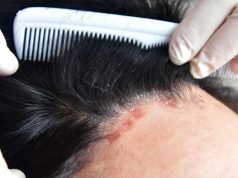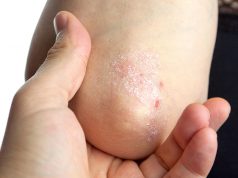Use of deep learning model improves diagnostic performance among nonproficient doctors
By Elana Gotkine HealthDay Reporter
THURSDAY, Feb. 16, 2023 (HealthDay News) — A deep learning (DL) model based on dermatoscopic images can differentiate scalp psoriasis from seborrheic dermatitis, according to a study recently published in Frontiers in Medicine.
Zhang Yu, from Inner Mongolia Medical University in Hohhot, China, and colleagues developed a new diagnostic method for discriminating scalp psoriasis and seborrheic dermatitis based on a DL model. A total of 1,358 pictures from 617 patients with pathological and diagnostic confirmed skin diseases (508 cases of psoriasis; 850 cases of seborrheic dermatitis) were randomly allocated into training, validation, and testing datasets (1,088, 134, and 136, respectively). The transfer learning technique was used to establish and train a DL model for differentiating the two diseases.
The researchers found that the DL model exhibited good sensitivity and specificity (96.1 and 88.2 percent), with an area under the curve (AUC) of 0.922. Compared with five dermatologists with various levels of experience, the DL model outperformed them for diagnosis of scalp psoriasis and seborrheic dermatitis. Comparable diagnostic performance can be achieved for nonproficient doctors with the assistance of the DL model and dermatologists proficient in dermoscopy. Diagnostic performance was improved for one dermatology graduate student and two general practitioners, with the AUC values increasing from 0.600, 0.537, and 0.575 to 0.849, 0.778, and 0.788, respectively; consistency of diagnosis was also improved with the kappa values increasing from 0.191, 0.071, and 0.143 to 0.679, 0.550, and 0.568, respectively.
“The DL model can prevent the delay of patients’ treatment, tackle the development of the disease course, and improve the prognosis when encountering patients with ambiguous diagnoses,” the authors write.
Copyright © 2023 HealthDay. All rights reserved.








